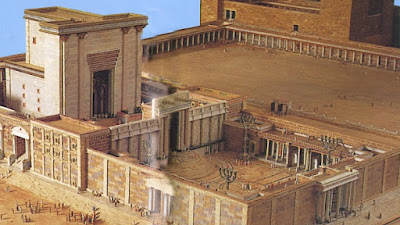Our new bishop recently asked me to write a summary of our first eight months in the Center as missionaries. Le voici:
We are loving our service in the Paris Temple Visitor’s center. We have been here since March 2019. Time is passing quickly and will find us home by next October. We see, on the average of 2,000 people per month literally from countries all over the world. About 60% are members of the Church many visiting the temple during their tourist itineraries. The other 40% are non-members from the area, guests of members coming to learn about the temple or experience the peace of the gardens. I teach a fireside or gospel seminar 1-4 times a week. Wednesday evenings are a doctrinal fireside for members hungry to add to their gospel scholarship. The other days range from non-LDS groups, bus loads, youth groups, wards, stakes, etc. asking for temple preparation, orientation, or something informative and engaging for youth or YA while parents or peers are in the temple for baptisms, endowments, or marriages. We have recently initiated a monthly enrichment seminar for mission-wide single adults. All of our teaching is streamed on our Facebook page at “centre d’accueil des visiteurs du temple de paris” ( https://www.facebook.com/CVTempleParis/ ) through Zoom conferencing.
Since there is a two-week school vacation about every seven weeks the wards will come as families to do temple service or YM, YW’s groups will come for baptisms and then want a gospel presentation for the youth ranging from The Life and Contribution of Joseph Smith; learning to understand symbols and their importance as a catalyst for personal revelation, to applying the Word of Wisdom, or Understanding the Doctrine of Christ and How the Temple fits into the Doctrine, etc.Both of us enjoy working with the twelve sister missionaries assigned to the VC. There are from two to six assigned each day with us depending on the day. We have opportunities to counsel, teach, comfort, and just talk while we await visitors. They are angels, the finest missionaries in the mission. Sister Frogley is responsible for all the music for the firesides and seminars so she is always arranging solos to groups, instrumentals to vocals. She also has the privilege of speaking with each missionary that has an investigator on date for baptism to schedule a temple orientation for them. The orientation is either done by personal visit or a virtual visit over the internet. The sisters use their phones to show the investigator the temple model, history models, and teach the importance of the temple. The mission president as instructed that all should have a pre-baptism tour, and a post baptism tour. A sample of our orientation can be seen on the internet through Meridian Magazine here: https://latterdaysaintmag.com/how-to-deal-with-temple-questions/ or here: https://latterdaysaintmag.com/temple-time-travel/Since we don’t have a car, we don’t travel much or do much site-seeing. We have become comfortable with peaceful evenings in our small apartment about two blocks from the temple. After a six-hour shift, and then another four or five preparing PowerPoints for the presentations, we usually are worn out and happy to relax for a few minutes or jog on our jogging tramp during cold months or walking or bicycling in the Versaille Chateau Park when the weather permits. Weather is “Seattle-like” so the humidity is 80-100% which affects the “real-feel” of the 29-90 degree range of temps. Winter is often wet and rainy and summers are sometimes hot and humid, but most of the time it is perfect - around 65-75 degrees and beautiful.We are able to go to the temple once per week and love the spirit of being on the temple grounds most of our waking hours. Seeing the changes since my first mission here 53 years ago is so gratifying. The church was firmly on the shoulders of young missionaries with many of us serving in all ward leadership positions. Today we enjoy the very capable leadership and warm member friendships of fourth generation French members. There are also many Tahitian and African French speakers as well. They are amongst the most receptive to the gospel message.Our highlights are seeing the best people in the world…those coming to the temple! A few weeks ago that included one of my old investigators who was baptized just after I left Rouen in 1968. He now serves as a temple sealer one day a week. Last week we met our old friends from our Sandy ward. Last month we joined two couples from our Draper ward for a temple session, lunch, and then a trip to the Monet Gardens and then on their return from Spain, a trip to the Loire Valley. That made for some full P-days. Two weeks ago my old companion, that I trained, came visiting from Norway…lunch was a walk down memory lane. We find connections almost everyday with someone who knows our children or other relative, or who loves or is from the St. George area.A mission call is an opportunity to have a front seat or even a small part in the winding up scene of this great mortal adventure. Yes we miss our kids, though Facebook messenger allows us to see and talk anytime. Yes, we miss our home, the red mountains and our ward friends but “L'absence est comme le vent qui éteint les petites flammes, mais mettre le feu à un incendie!”Love,
Sister Janet and Elder Craig Frogley






























































